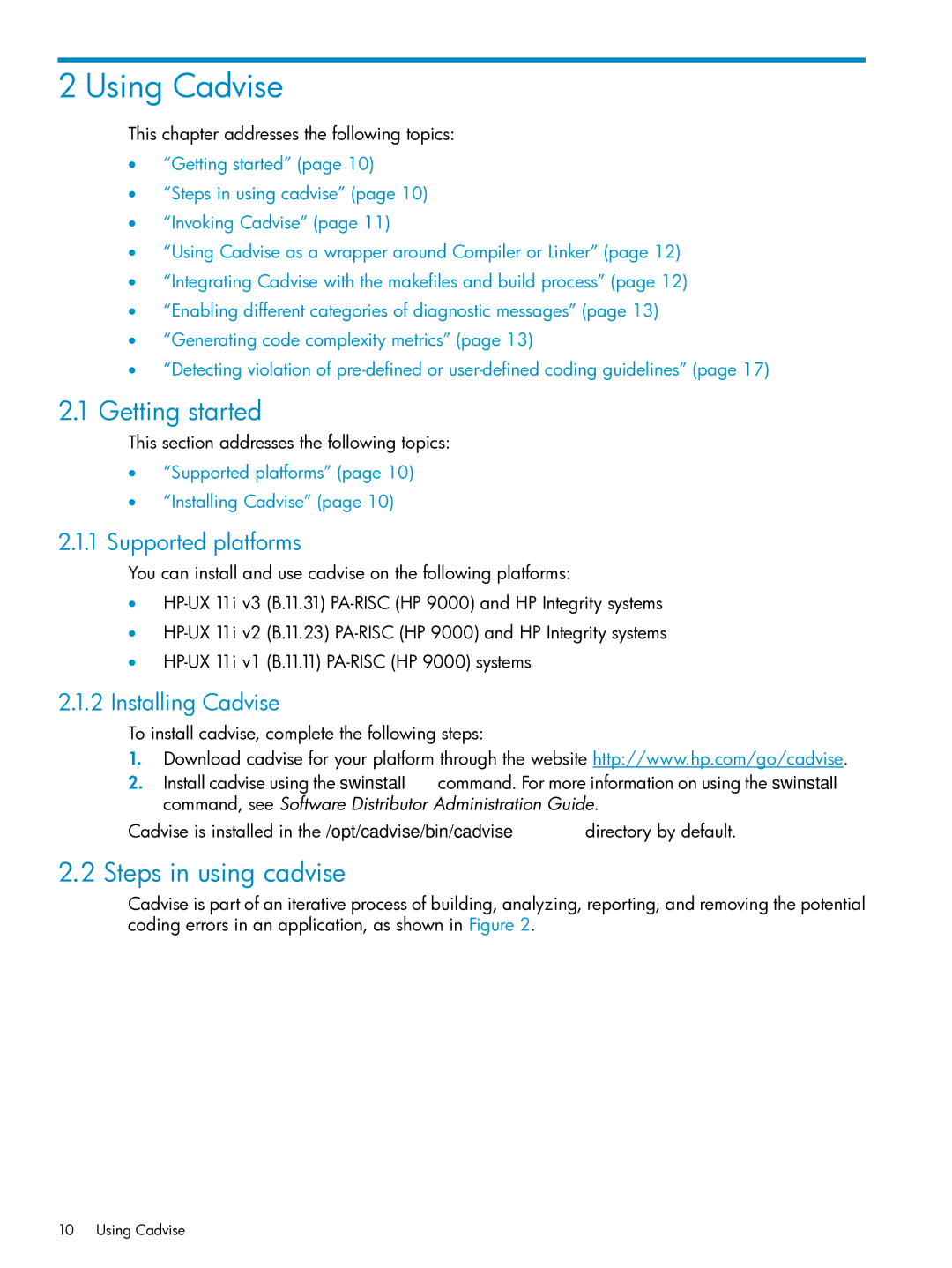2 Using Cadvise
This chapter addresses the following topics:
•“Getting started” (page 10)
•“Steps in using cadvise” (page 10)
•“Invoking Cadvise” (page 11)
•“Using Cadvise as a wrapper around Compiler or Linker” (page 12)
•“Integrating Cadvise with the makefiles and build process” (page 12)
•“Enabling different categories of diagnostic messages” (page 13)
•“Generating code complexity metrics” (page 13)
•“Detecting violation of
2.1Getting started
This section addresses the following topics:
•“Supported platforms” (page 10)
•“Installing Cadvise” (page 10)
2.1.1Supported platforms
You can install and use cadvise on the following platforms:
•
•
•
2.1.2Installing Cadvise
To install cadvise, complete the following steps:
1.Download cadvise for your platform through the website http://www.hp.com/go/cadvise.
2.Install cadvise using the swinstall command. For more information on using the swinstall command, see Software Distributor Administration Guide.
Cadvise is installed in the /opt/cadvise/bin/cadvise directory by default.
2.2 Steps in using cadvise
Cadvise is part of an iterative process of building, analyzing, reporting, and removing the potential coding errors in an application, as shown in Figure 2.
10 Using Cadvise
